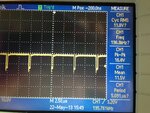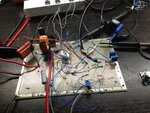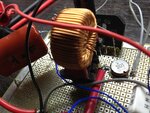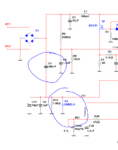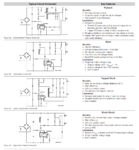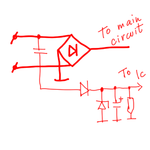stevenmahoney
Junior Member level 3
Good point! That was one of my questions this morning. Yesterday night I was too tired.  Thanks for the good point!
Thanks for the good point!
- - - Updated - - -
godfreyl,
Thanks for pointing this out. I was meaning to ask goldsmith about it, but was tired yesterday and left this for this morning.
I have 8 LED drivers working on 4 strings of LEDs. Each string uses 300mA of current, so I use 2 LED drivers per string. I simplified the schematics here to focus only on the suppressing extra 32V.
As to heat dissipation, I use a heat sink on all of the LED drivers. Usually if they heat, they begin to lower the LED current. With the heat sink, the current stays constant.
Actually I might even put 3 of them per string to spread out the current among them, so I might not even need the heat sink at all or will need a very small one. Gotta try it tonight.
Gotta try it tonight.
Actually I need an output of 108V. I need to eliminate extra 32V with his buck converter. I will ask him this questions tonight, when he comes online. Good attention to details!
Good attention to details! 
Steven
- - - Updated - - -
godfreyl,
Thanks for pointing this out. I was meaning to ask goldsmith about it, but was tired yesterday and left this for this morning.
I have 8 LED drivers working on 4 strings of LEDs. Each string uses 300mA of current, so I use 2 LED drivers per string. I simplified the schematics here to focus only on the suppressing extra 32V.
As to heat dissipation, I use a heat sink on all of the LED drivers. Usually if they heat, they begin to lower the LED current. With the heat sink, the current stays constant.
Actually I might even put 3 of them per string to spread out the current among them, so I might not even need the heat sink at all or will need a very small one.
Actually I need an output of 108V. I need to eliminate extra 32V with his buck converter. I will ask him this questions tonight, when he comes online.
Steven


